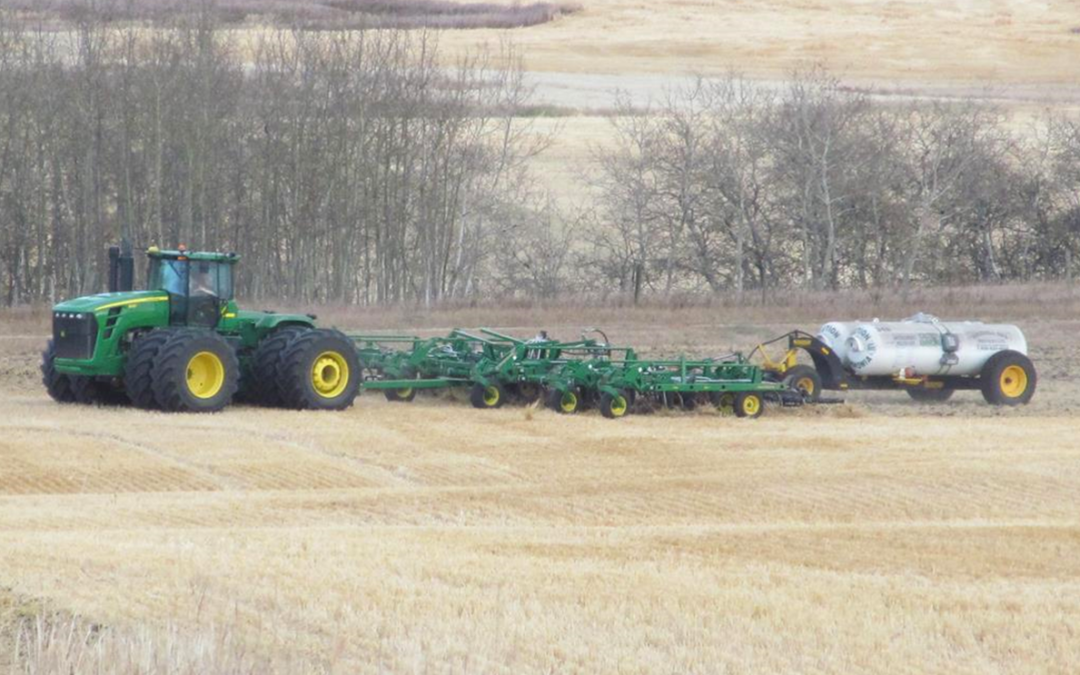By: J.C.(Jack) Payne, PAg, CCA
Regional Agronomist, Farmers Edge
With rain and snow hampering harvest operations in some regions of western Canada, it is important to note that it can also disturb the effectiveness of fall fertilizer application with anhydrous ammonia. Excessively dry or wet soils may not provide the right conditions for the soil to flow around and close up behind the anhydrous ammonia applicator knife.
When anhydrous ammonia (NH3) is injected into the soil, it quickly binds to water and converts to ammonium (NH4) – a positive charged ion which binds to soil particles preventing losses. Very little water is required for this conversion to occur and approximately 90 percent of the nitrogen is retained, even in air dried soils.
Gaseous losses of anhydrous ammonia can occur when it is being banded into wet soils, however, the cooling effect of NH3 can cause moist soil to freeze on the opener. The accumulation of soil causes a wider furrow and reduces the flow of soil back over the fertilizer band. This problem is aggravated by cold soil, high NH3 application rates and wet soil. Applicators should stop periodically and check furrows for gassing off losses. The best test to determine if a proper seal is obtained is to go back to the application zone and smell. If you can smell ammonia awhile after application, that’s clear evidence that ammonia losses are occurring.
If losses are occurring the operator can try the following solutions:
- Change the travel speed (ie. going slower);
- Change the opener depth or modify the opener to increase the flow of soil back over the band;
- Use harrows or packers to help close up the furrows.
Anhydrous ammonia is an effective and cheap nitrogen source. Applications in wet soils may require tweaking to reduce gaseous losses and to improve application efficiency.


